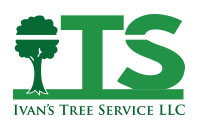Are Your Ash Trees Infested by the Emerald Ash Borer?

Big beautiful ash trees are a staple in the Twin Cities and surrounding areas. But since 2002, there have been fewer and fewer due to an infestation of the Emerald Ash Borer.
The Emerald Ash Borer may not be something you’re aware of, but for the sake of your trees (and your property!) you should be aware. The Emerald Ash Borer (or EAB for short) is a metallic green insect that has been infesting trees in North America since 2002. They are incredibly harmful to ash trees and can render a tree dead in a matter of years – thinning out the tree’s canopy within 2 years and killing up to half of the branches in the first year. Although EABs can affect healthy trees, usually they prefer weak or diseased ash trees to infest. Stopping them from spreading is vital to both saving trees and saving you the time and money from dealing with a mass infestation. Is Your Tree Infested?Knowing if your tree is infested is the first step in stopping the spread of the Emerald Ash Borer. But it can be difficult to diagnose if you don’t know what to look for. You may be able to tell if your ash tree is infected based on the following three main symptoms: 1. A Bare Top of the TreeIf you notice a thinned out upper canopy on your ash tree, it may be a sign of infestation as dieback typically starts from the top.
2. Bark CrackingIf you can see vertical cracks in the tree bark of your ash tree, it could be a symptom of EAB infestation. Furthermore, if you peel back the bark and see squiggly lines in the tree trunk, those are caused from larvae feeding between the bark and the tree trunk. 3. Little Holes in the Bark
If there are visible holes bored into the bark, it may be indicative of either an adult EAB exiting the tree, or birds and animals digging for EAB larvae that are burrowed behind the bark. If the ash tree(s) on your property display any of these symptoms, your tree may be infested and the next step is to treat the problem to try and stop the spread of Emerald Ash Borer.
Simply trimming an infested ash tree doesn’t seem to be effective against this type of invasive species, so it’s typically best to call an Arborist to get a professional recommendation on how to deal with the infestation. More often than not, diseased ash trees need to be removed to help stop the spread to other area ash trees. If you think your ash tree is diseased and will need to be removed, do not wait to call a professional tree service (like Ivan’s) as the longer you wait, the more expensive the tree removal can get. It’s better to diagnose a tree removal sooner than later so the tree is still healthy enough for an arborist to climb rather than having to use a raised bucket (which increases the cost of the removal).
Not sure if you have an infested tree? Or do you know you have a diseased ash tree that may need to be removed? In either scenario, contact us at Ivan’s Tree Service. We’re trained to evaluate and handle trees infested by Emerald Ash Borers and our certified arborists would be happy to help develop a plan of attack for treatment and/or tree removal. Don’t wait, a free estimate from us can’t hurt!
Have you had any experience with EABs? If so, we would love to hear your experience. Contact us directly and share your story with us.
